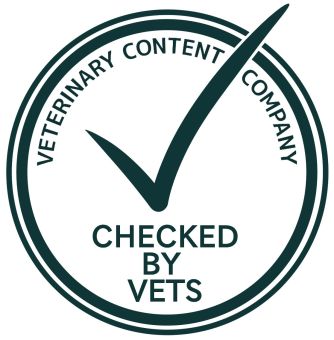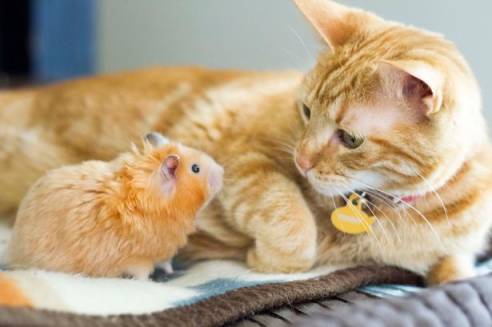Just like humans, our cat companions can develop eye problems ranging from conjunctivitis to other infections and even damage to the cornea. Cat eye conditions are not only annoying for your cat, but they can also be dangerous. Some cat eye ailments can even be passed on to you and your family. However, most eye problems in cats can easily be treated and cured with eye drop ointments and/or antibiotics prescribed by your veterinarian.
Connect with a verified veterinarian in minutes. Licensed vets are available 24/7 to answer your questions. No need to worry about your furry family member.
It’s not easy to give an unwilling cat eye drops; however, we’ll take a look at how to do that later in the article. First, we’ll discuss how to check your cat’s eyes, symptoms to watch for, and eye drop medications.
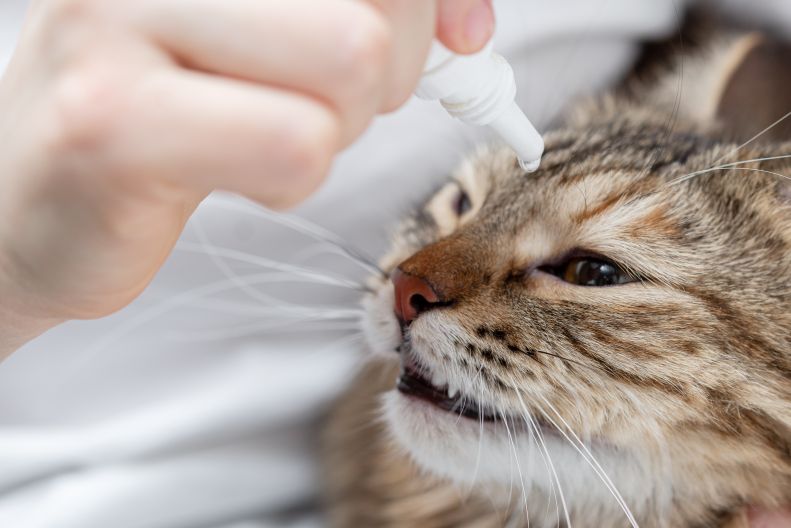
Checking Your Cat’s Eye Health
Just like you keep an eye on the overall health of your cat, it’s a good idea to frequently check your kitty’s eyes to ensure she hasn’t developed an eye problem.
To check your cat’s eyes, have your cat face you in a well lit room and then look into her eyes. Her eyes should be bright and clear, and her pupils should be equal in size. In addition, the area around her eyeball should be white. The lining of her eye should be a nice pink, with no white or red coloration. There also should not be any discharge from your cat’s eyes. These are signs your cat’s eyes are healthy.
It is a good idea to regularly check your cat’s eyes and quickly take action if a problem does develop.
Cat Eye Problem Symptoms
Some cat eye problems may clear up quickly but eye conditions can become serious if left untreated so it is always best to get any eye condition checked by your veterinarian. If a serious eye problem is left untreated, your cat could lose her vision or worse. Some infections can even be passed to you and your family.
Eye infections and other eye problems are common in cats, especially in outdoor cats. Outdoor cats come into contact with other animals and unknown environments. while they’re outside. By comparison, indoor cats have a lower risk of developing eye problems. Even so, any cat can develop an eye problem, so it’s important to know what symptoms to watch for.
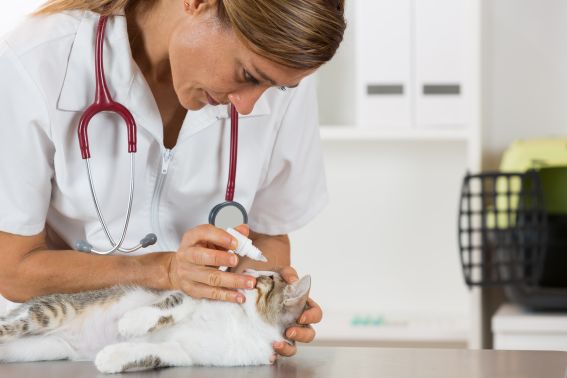

Review symptoms, medications & behavior to keep your pets healthy with a Vet Online in just minutes.
Ask a Vet Live NowCommon Cat Eye Symptoms
- Redness and/or swelling of the eye(s)
- Discharge
- Squinting or holding the eye closed
- Pawing and/or rubbing at her eyes
Other signs and symptoms to watch for are pain and distress, lethargy, cloudy eyes or unusual growths near or in one or both eyes.
The Most Common Cat Eye Problems
Here’s a short list of some of the most common cat eye problems:
- Conjunctivitis: one or both eyes are red and sometimes swollen, and there may be discharge. Humans can have this same condition. Conjunctivitis can be caused by an infection or even allergies.
- Keratitis: the cornea of your cat’s eye becomes inflamed, causing the eye to look watery and cloudy.
- Third eyelid protrusion: sometimes your cat’s third eyelid can become inflamed and you can see it partially covering your cat’s eye. This condition can be caused by a wound to the third eyelid, or can be an indication of a virus or general ill-health..
- Cataracts: just like humans, cats can develop cataracts, which is an opacity that develops in the eye—especially in diabetic and elderly cats.
- Corneal ulcers: are open sores of the tissues on the surface of the eye. This condition can be caused by infections, injuries, dry eyes (inadequate tear production), or anatomical eye abnormalities.
- Allergies or irritants: cats can have allergies which sometimes cause dry, itchy, and red eyes, often accompanied by a discharge, though these are not common. Even so, any irritant, such as dust, fragrances, tobacco smoke, pollen —can get into your cat’s eyes and cause problems.
Medical Treatment for Cat Eye Conditions
Many cat eye conditions can be treated with cat eye drops. You may wonder if it’s OK to put human eye drops in cats eyes. This is never a good idea. Eye drops for humans may contain chemicals that could be toxic to your cat, even causing your cat to lose her vision. So, it’s never recommended to put human eye drops in a cat’s eyes, unless directed to do so by your veterinarian.
You may also wonder about the use of saline drops on your cat. Non-medicated eye drops, such as saline drops, are safe to use in your cat’s eyes. But you should always check with your veterinarian first. Use of saline drops can sometimes be helpful for itchy/watery eyes caused by allergies.
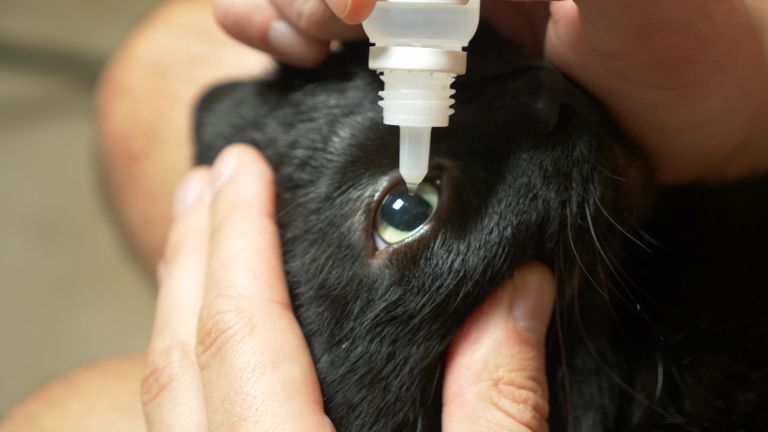
What about cat eye drops over the counter? Again, only use these types of eye drops if recommended to by your veterinarian. There are special drops available that can help to keep your cat’s eyes clean, but again, over the counter cat eye drops should only be used under the direction of your pet’s vet.
Next, we’ll take a look at ways in which you can give your cat eye drops; including a method to give aggressive cats eye drops.
Giving Your Cat Eye Drops
Some cats are really good about getting eye drops put into their eyes, but many cats become uncomfortable and stressed when it comes to applying eye drops. Who likes a dropper coming at their eye? Even so, if your vet has prescribed eye drops for your cat, then this is a medical necessity and you’ll need to ensure you follow all the treatment steps as directed by the veterinarian.
As with any other medication, be sure to follow all the directions you’ve received from your veterinarian and follow all package instructions.
Before touching your cat’s face or handling the medication, be sure to wash your hands. This prevents contamination and/or the spread of infection. Be sure to keep the eye dropper’s tip clean and don’t let it come into contact with your cat’s eyes, eyelids or any other surface. If that happens, be sure to wipe the eye dropper off with a clean cloth before treating your cat.
One tip: try to avoid getting stressed during this procedure. Cats will perceive your anxiousness and will in turn become even more anxious. Try first just holding your pet and calmly petting them. Maybe even try playing some soothing, relaxing music in the background to help you both stay calm.
Here are the steps for administering your cat’s eye drops:
1. Clean the eye area: your vet may want you to first gently clean any discharge or other debris from your cat’s eyes. You can do this with a soft washcloth dipped in cooled boiled water—but no soap.
2. Methods to hold your cat: there are different ways that you can hold you cat while giving her the eye drops:
- In your lap: while seated in a chair or on the floor, hold your cat firmly in your lap with your non-dominant hand, putting your forearm across her body to keep her from jumping away.
- Between your knees: another way to hold your cat is to keep her firmly between your knees, while kneeling on the floor. You can also try keeping your kitty between your thighs–each method can help to keep both of your hands free to deal with the medication.
- Give an aggressive cat eyedrops: if your cat won’t tolerate being held in any of the manners listed above, consider wrapping her body in a towel or blanket, leaving only her head is sticking out. It can be challenging to give a difficult cat eye drops, but remember this treatment is essential for your cat’s health.
- Ask for help: consider asking another person to either hold your cat or administer the eye drops. This might be the easiest way to manage a difficult or aggressive cat.
3. Hold your cat’s face: Place one of your hands under your cat’s jaw with the thumb to the side of your cat’s mouth and fingers on the other side. Then tilt your cat’s head slightly up toward you. It’s best to use the non-dominant hand, as you’ll need to use a firm, steady hand to administer the eye drops.
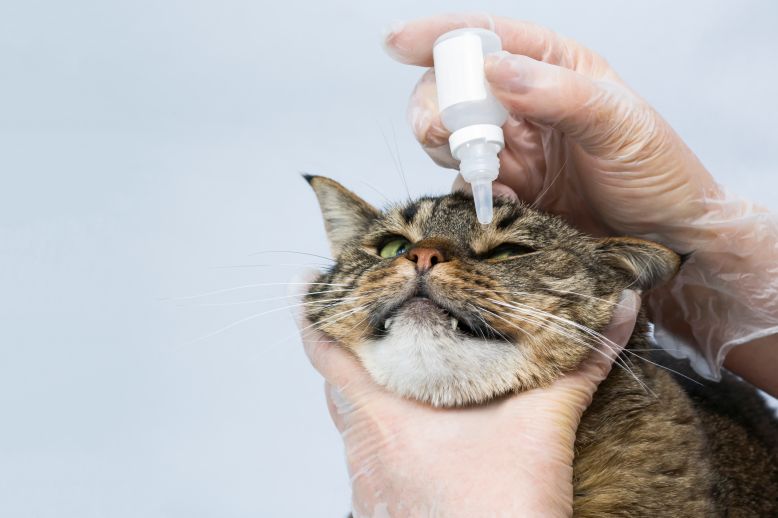
Use your thumb to gently pull down the lower lid of your cat’s eye, creating a small pouch. You can drop the medication into the pouch, rather than some other spot in the eye.
This is the easiest application of eye drops or eye ointment.
4. Take position: Then place the eye dropper about ½” to 1” near your cat’s eye, but make sure the eye drop applicator doesn’t touch your cat’s eye or any other surface. This could hurt the eye and/or contaminate the eye dropper.
5. Squeeze: push the right amount of eye drops/ointment into the eye—try to get the solution into the pouch you’ve created, or onto the surface of the eye but without touching the dropper to the eye
6. Check: Once you’ve completed this process (for one or both eyes), it’s a good idea to keep holding your cat for another few minutes. This allows the eye drops/ointment to be absorbed and keeps your cat from rubbing the medication from her eyes.
After you’re completely finished, you might consider giving your cat a treat or a meal to distract them from the eye drop procedure and teach them that they get a reward.
Giving your cat eye drops can be challenging, but hopefully this article has given yo a few tips. If you’re still struggling with your cat’s eye drops, then ask your vet for help. You’ll help your kitty to feel better and heal—you could also be saving her vision by ensuring she receives her eye drops as directed by your veterinarian.
Connect with a verified veterinarian in minutes. Licensed vets are available 24/7 to answer your questions. No need to worry about your furry family member.

Gemma Cliffin BSC BVSC MRCVS
This article has been reviewed and approved by an independent Veterinarian: Dr Gemma Cliffin MRCVS is an experienced small animal vet who combines her love of writing alongside working in practice. Since her graduation from the University of Liverpool in 2014 she has worked in a wide variety of roles including first opinion practice, as a night vet and as a locum vet. She has also spent time working at a charity clinic in the Cook Islands which was a challenge but also immensely rewarding. She loves all aspects of veterinary work, but she especially enjoys medicine cases and diagnostic imaging. She is passionate about pain-management, particularly in her more senior patients. She currently works in a first opinion small animal practice in North Yorkshire where she deals with both routine and emergency cases.
Review symptoms, medications & behavior to keep your pets healthy with a Vet Online in just minutes.
Ask a Vet Live Now

